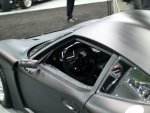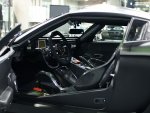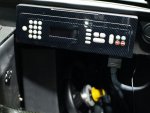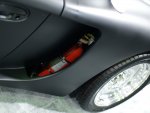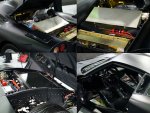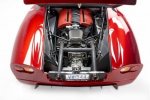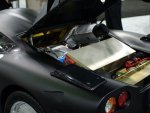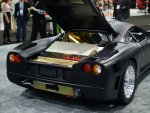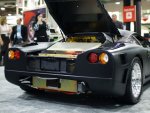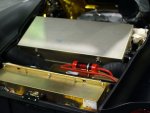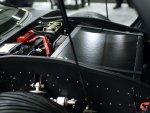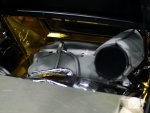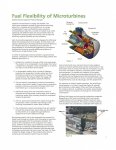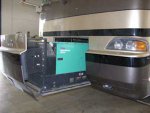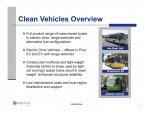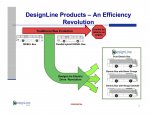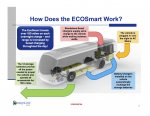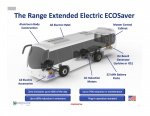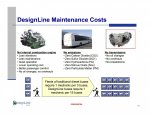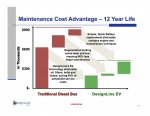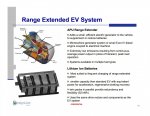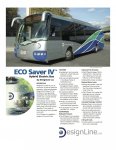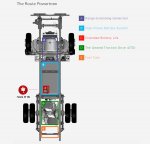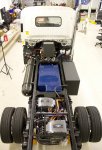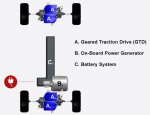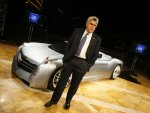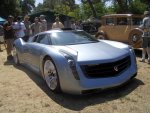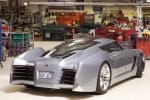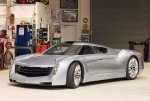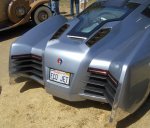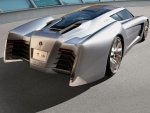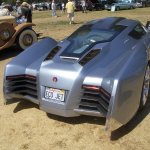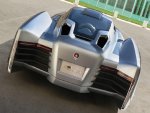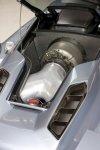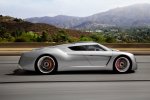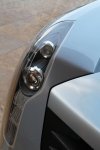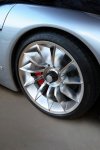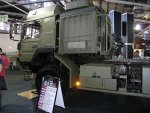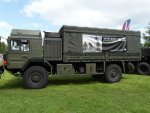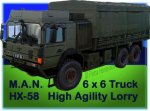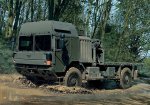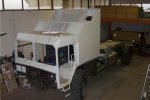biotect
Designer
.
CONTINUED FROM PREVIOUS POST
**************************************
C. The CMT-380 Sports Car fitted with a Capstone Turbine
Already back in 2009 Capstone unveiled the CMT-380 Supercar, which features an ultra-low-emissions Capstone C30 turbine (30 KW, or 40 HP), can reach 60 mph in 3.9 seconds, has a top speed of 150 mph, and can travel more than 500 miles (800 km) on a single tank of gas.
See http://www.capstoneturbine.com/_docs/CMT380 Microturbine Supercar.pdf , http://www.capstoneturbine.com/search/index.asp?q=CMT-380&s=Search , http://www.capstoneturbine.com/news/story.asp?id=536 , http://www.capstoneturbine.com/news/tradeshowsdetail.asp?id=50 , http://www.capstoneturbine.com/news/mediaeventsdetail.asp?id=29 , http://www.independent.co.uk/life-s...-key-to-the-engine-of-the-future-1831956.html , http://www.examiner.com/article/turbines-for-hybrid-supercars-capstone-turbine-knows-a-thing-or-two , http://www.examiner.com/slideshow/capstone-turbine-cmt-380-hybrid-supercar#slide=3 , http://www.theregister.co.uk/2009/12/01/cmt_380_microturbine/ , http://www.greencarcongress.com/200...tended-electric-supercar-at-la-auto-show.html , http://inhabitat.com/capstone-unveils-hybrid-supercar-propelled-by-a-jet-turbine/ , http://sportcar5.blogspot.it/2010/01/capstone-supercar-cmt-380-high.html , http://www.gizmag.com/capstone-cmt-380-an-electric-hybrid-featuring-wind-turbines/13517/ , http://www.motorauthority.com/news/1039249_cmt-380-hybrid-concept-comes-complete-with-jet-turbine , https://www.facebook.com/note.php?note_id=187538462863 , http://www.fastcompany.com/1474521/eas-need-speed-creator-designs-cmt-380-actual-hybrid-supercar , http://green.autoblog.com/2010/03/05/update-on-the-cmt-380-microturbine-hybrid-sports-car/ , http://designcarperformance.blogspot.it/2010/01/capstone-supercar-cmt-380-high.html , http://inhabitat.com/capstone-unveils-hybrid-supercar-propelled-by-a-jet-turbine/ , http://dailynewsdig.com/capstone-cmt-380-electric-concept-car/ , http://venturebeat.com/2009/12/01/cmt-380-supercar-watches-porsche-in-the-rear-view/ , http://www.diseno-art.com/encyclopedia/vehicles/road/cars/capstone_cmt-380.html , http://greensupercar.com/2011/01/ne...ept-capstone-turbine-cmt-380-hybrid-supercar/ , and http://www.democraticunderground.com/discuss/duboard.php?az=view_all&address=389x7125056 :
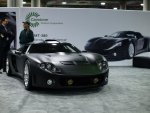
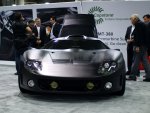

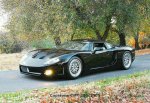

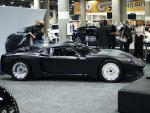
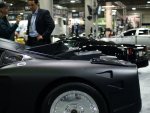
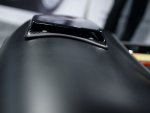
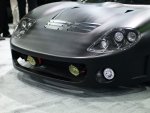
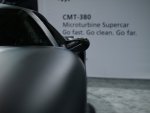
The gentleman with the long hair in the first few photographs is Electronic Arts Chief Creative Director Richard Hilleman, the proud owner, who developed the CMT-380 in partnership with Capstone. See http://www.interactive.org/about/rich_hilleman.asp , http://en.wikipedia.org/wiki/Richard_Hilleman , http://www.mobygames.com/developer/sheet/view/developerId,8/ , and https://www.youtube.com/watch?v=DiboVZsXYXY . The following is a short interview with Hilleman, in which he explains the CMT-380. He comes across as a very smart and very humble "über-geek", whose description initially passes way over the head of the interviewer:
**************************************
CONTINUED IN NEXT POST
.
CONTINUED FROM PREVIOUS POST
**************************************
C. The CMT-380 Sports Car fitted with a Capstone Turbine
Already back in 2009 Capstone unveiled the CMT-380 Supercar, which features an ultra-low-emissions Capstone C30 turbine (30 KW, or 40 HP), can reach 60 mph in 3.9 seconds, has a top speed of 150 mph, and can travel more than 500 miles (800 km) on a single tank of gas.
See http://www.capstoneturbine.com/_docs/CMT380 Microturbine Supercar.pdf , http://www.capstoneturbine.com/search/index.asp?q=CMT-380&s=Search , http://www.capstoneturbine.com/news/story.asp?id=536 , http://www.capstoneturbine.com/news/tradeshowsdetail.asp?id=50 , http://www.capstoneturbine.com/news/mediaeventsdetail.asp?id=29 , http://www.independent.co.uk/life-s...-key-to-the-engine-of-the-future-1831956.html , http://www.examiner.com/article/turbines-for-hybrid-supercars-capstone-turbine-knows-a-thing-or-two , http://www.examiner.com/slideshow/capstone-turbine-cmt-380-hybrid-supercar#slide=3 , http://www.theregister.co.uk/2009/12/01/cmt_380_microturbine/ , http://www.greencarcongress.com/200...tended-electric-supercar-at-la-auto-show.html , http://inhabitat.com/capstone-unveils-hybrid-supercar-propelled-by-a-jet-turbine/ , http://sportcar5.blogspot.it/2010/01/capstone-supercar-cmt-380-high.html , http://www.gizmag.com/capstone-cmt-380-an-electric-hybrid-featuring-wind-turbines/13517/ , http://www.motorauthority.com/news/1039249_cmt-380-hybrid-concept-comes-complete-with-jet-turbine , https://www.facebook.com/note.php?note_id=187538462863 , http://www.fastcompany.com/1474521/eas-need-speed-creator-designs-cmt-380-actual-hybrid-supercar , http://green.autoblog.com/2010/03/05/update-on-the-cmt-380-microturbine-hybrid-sports-car/ , http://designcarperformance.blogspot.it/2010/01/capstone-supercar-cmt-380-high.html , http://inhabitat.com/capstone-unveils-hybrid-supercar-propelled-by-a-jet-turbine/ , http://dailynewsdig.com/capstone-cmt-380-electric-concept-car/ , http://venturebeat.com/2009/12/01/cmt-380-supercar-watches-porsche-in-the-rear-view/ , http://www.diseno-art.com/encyclopedia/vehicles/road/cars/capstone_cmt-380.html , http://greensupercar.com/2011/01/ne...ept-capstone-turbine-cmt-380-hybrid-supercar/ , and http://www.democraticunderground.com/discuss/duboard.php?az=view_all&address=389x7125056 :










The gentleman with the long hair in the first few photographs is Electronic Arts Chief Creative Director Richard Hilleman, the proud owner, who developed the CMT-380 in partnership with Capstone. See http://www.interactive.org/about/rich_hilleman.asp , http://en.wikipedia.org/wiki/Richard_Hilleman , http://www.mobygames.com/developer/sheet/view/developerId,8/ , and https://www.youtube.com/watch?v=DiboVZsXYXY . The following is a short interview with Hilleman, in which he explains the CMT-380. He comes across as a very smart and very humble "über-geek", whose description initially passes way over the head of the interviewer:
**************************************
CONTINUED IN NEXT POST
.
Last edited:

